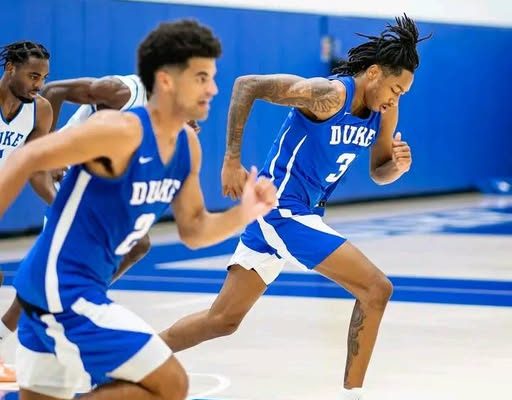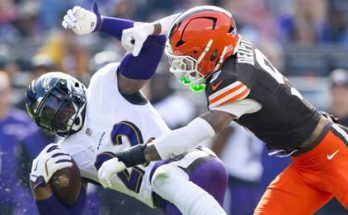It’s only July, a time when most college basketball programs are still in the nascent stages of their pre-season preparations, focusing on individual skill development, strength and conditioning, and perhaps some light team drills. Yet, down in Durham, something profoundly different is brewing within the storied walls of Cameron Indoor Stadium, and the whispers emanating from those hallowed halls are growing louder, carrying a distinct hum of anticipation, and, for the rest of the NCAA, a genuine sense of unease. What Duke just showed in practice isn’t merely a glimpse; it’s a full-blown declaration, an audacious statement that this team, still months away from the official tip-off, is already operating with a cohesion, intensity, and sheer talent level typically reserved for the crucible of March. The notion of a team being in “March form” in July might sound hyperbolic, a dramatic flourish designed for headlines, but for those who have observed the Blue Devils’ early summer sessions, it’s a sober assessment of a reality that could very well redefine the landscape of the upcoming college basketball season. And the names stepping up, the players who are truly elevating this squad to an unprecedented early peak, might just surprise you.
This isn’t just about the marquee freshmen, though their impact is undeniable and foundational to this burgeoning narrative. Of course, the arrival of a generational talent like Cooper Flagg was always going to send ripples through the college basketball world. His recognition as the ACC Male Athlete of the Year even before playing a single collegiate game speaks volumes about his prodigious talent and the immense expectations that accompany him. But what’s truly remarkable is how seamlessly Flagg has integrated, not just as a dominant individual, but as a catalyst who amplifies the strengths of everyone around him. In these early practices, his defensive instincts and disruptive presence are already at an elite level, transforming Duke’s defensive identity with a fluidity and intensity rarely seen from a newcomer. He’s not just blocking shots; he’s changing passing lanes, forcing turnovers, and igniting fast breaks with a vision that belies his youth. The offensive end, equally impressive, sees him making complex plays look effortless, whether it’s a timely cut to the basket, a decisive drive, or a surprisingly consistent perimeter shot that is developing faster than many anticipated. Flagg’s ability to impact the game in so many facets, even in an informal setting, is the kind of gravitational pull that elevates an entire unit.
But the surprise, the genuine cause for concern among Duke’s competitors, comes from beyond the expected star power. It’s the emergence of players like Kon Knueppel, a freshman wing whose early performance has already challenged conventional wisdom regarding the starting lineup. Jon Rothstein’s early projections, which placed Knueppel in the starting two-spot over a more experienced sophomore guard like Caleb Foster, weren’t just a speculative leap; they were a recognition of what’s unfolding behind closed doors. Knueppel isn’t flashy in the way some Duke freshmen are; his game is built on a quiet precision, a calculated approach that earned him the moniker “slow is smooth, and smooth is fast.” This sharpshooter possesses an uncanny ability to create space, find his shot, and deliver with remarkable consistency. His confident playmaking, a silky flair with the ball in his hands, suggests a player far more mature than his age. He’s not forcing anything, yet every move seems to contribute to the overall flow of the offense. His presence on the floor expands Duke’s offensive possibilities, pulling defenders out and creating driving lanes for others, a subtle but incredibly effective contribution that could make him an indispensable piece of Coach Jon Scheyer’s rotation from day one.
Then there are the newcomers who arrived with slightly less fanfare but are poised to make an outsized impact: Sebastian Wilkins and Dame Sarr. Wilkins, in particular, has demonstrated a surprising versatility that is already reshaping Duke’s strategic options. His ability to fluidly transition between positions, showcasing skills typically associated with smaller forwards, adds a dynamic layer to the Blue Devils’ offensive and defensive schemes. Whether it’s his unexpected proficiency in handling the ball in transition, his knack for finding open teammates with astute passes, or his improved shooting stroke from beyond the arc, Wilkins is proving to be far more than just a complementary piece. He is a multi-tool player who can adapt to various game situations, providing Coach Scheyer with a flexibility that will be invaluable over the course of a long season. Dame Sarr, on the other hand, arrives with genuine NBA potential, a raw talent that is rapidly being refined. His athleticism, length, and burgeoning offensive game are drawing comparisons to established NBA talents, and while it’s early, the flashes he’s showing in practice suggest he could quickly develop into a legitimate scoring threat. His ability to attack the rim with force and finish through contact, combined with an improving mid-range game, gives Duke another potent weapon on a roster already brimming with offensive firepower.
The depth of this Duke team is truly what sets them apart, even at this early stage. It’s not just the new faces, but also the significant steps taken by returning players who are embracing expanded roles and demonstrating considerable growth. Isaiah Evans, a former five-star recruit who showed flashes of brilliance last season, is one such player. After a collegiate debut that saw him primarily deployed as a three-point specialist and defensive presence, Evans is reportedly poised for a dramatically elevated role. His elite shooting ability at 6’6″ is undeniable, but it’s the development of his overall offensive game, his ability to create his own shot off the dribble, and his improved court vision that are making him a far more complete and dangerous player. With key backcourt pieces potentially moving on, Evans has seized the opportunity to become a primary initiator, and his increased confidence and refined skill set are evident in every practice drill. He’s showcasing a versatility that will be crucial for Duke’s offensive dynamism, proving he’s more than just a spot-up shooter.
Similarly, in the frontcourt, Patrick Ngongba II and Maliq Brown are stepping up in significant ways. Brown, despite dealing with injuries last season, proved to be one of Duke’s most valuable defenders, possessing a rare combination of length and the ability to switch effectively across multiple positions. His continued recovery and enhanced defensive prowess are critical for maintaining Duke’s top-tier defensive identity, especially with potential shifts in the roster. Ngongba II, who saw limited action early last season, has emerged as a formidable presence. His rim-protecting ability, combined with a surprising agility for his size, makes him a legitimate threat in the paint. With the departure of Khaman Maluach to the NBA draft, a void in the true center position opened up, and both Ngongba II and Brown are demonstrating they are more than capable of filling that role, potentially even challenging for a starting spot. Their work ethic and commitment to improvement have not only bolstered Duke’s interior defense and rebounding but also added depth and versatility to their big man rotation, something crucial for navigating the physicality of March Madness.
The veteran leadership, particularly from players like Tyrese Proctor, is another unsung hero in this early-season narrative. Proctor, who had his best season in Durham in 2025, showed significant statistical improvements, particularly in his scoring efficiency and three-point shooting. His continued development as a primary ball-handler and playmaker, combined with his excellent defensive capabilities, provides a steadying presence in a team otherwise defined by youthful exuberance. His experience and poise in high-pressure situations will be invaluable as the season progresses, guiding the younger talents and ensuring that Duke remains composed when faced with adversity. The synergy between these experienced players and the new blood is what truly differentiates this Duke team. It’s not just a collection of elite individual talents; it’s a cohesive unit that is learning to play together at an incredibly accelerated pace. The chemistry is already palpable, a sign of dedicated summer work and an intrinsic understanding of Coach Scheyer’s vision.
The implications of this early “March form” are profound for the rest of the NCAA. When a team demonstrates this level of readiness in July, it suggests several things. Firstly, it indicates an exceptional level of coaching and player development. Coach Scheyer and his staff are clearly maximizing the offseason, instilling their system and fostering a competitive environment that pushes every player to improve. The fact that players are already exhibiting such high-level execution speaks to the effectiveness of their training regimens and strategic planning. Secondly, it points to a significant psychological advantage. When a team knows it’s ahead of schedule, when it feels this confident and cohesive so early in the calendar, it can carry that momentum throughout the season, weathering inevitable bumps in the road with greater resilience. The “nervousness” felt by other NCAA programs isn’t just about Duke’s raw talent; it’s about the very real possibility that this team will peak not once, but multiple times throughout the season, with their July form merely being the baseline.
The concept of “March form” itself is a complex tapestry woven from peak physical conditioning, strategic precision, mental toughness, and an unwavering belief in collective purpose. To see even elements of this in July is extraordinary. It speaks to a rigorous summer program that goes beyond mere conditioning, delving deep into offensive and defensive schemes, fostering intricate player movements, and honing decision-making under simulated game pressure. The speed at which this Duke team is grasping complex sets, the fluidity with which they transition between offense and defense, and their disciplined execution of defensive rotations are all hallmarks of a team that has been drilled to perfection, even in the absence of external competition. This isn’t a team relying solely on individual heroics; it’s a unit that understands the value of collective effort, where every player is committed to their role within the larger system.
Furthermore, the depth of this squad means that they possess a unique ability to withstand the rigors of a long college basketball season. Injuries, slumps, and the inevitable fatigue that sets in during conference play often derail promising teams. However, with multiple players capable of stepping into expanded roles and maintaining a high level of performance, Duke appears exceptionally well-equipped to navigate these challenges. The competition for playing time within the team is itself a powerful motivator, pushing each player to consistently elevate their game. This internal competition ensures that complacency remains at bay and that the intensity observed in July will likely persist throughout the season, driving continuous improvement. Every player knows that their spot is earned, not given, and this fosters an environment of relentless self-improvement.
The narrative of “names stepping up might surprise you” is particularly compelling because it defies the conventional wisdom that often surrounds highly touted recruiting classes. While the stars are shining brightly, it’s the quiet, consistent development of others that truly elevates this team from great to potentially historic. It’s the unheralded commitment from players like Caleb Foster, who, despite potentially losing a starting spot to a freshman, has reportedly continued to work diligently, embodying a team-first mentality. While some projections suggested he might seek a transfer, his continued presence and dedication in practice highlight the strong team culture that Coach Scheyer has cultivated. Even if his minutes fluctuate, Foster’s talent and experience provide invaluable depth and leadership, particularly in the backcourt. This commitment from every player, regardless of their projected role, is a testament to the program’s ability to foster growth and unity.
In essence, what Duke has unveiled in these early July practices is not just a collection of talented individuals, but a fully formed, highly disciplined, and incredibly hungry basketball team that seems years, not months, ahead of schedule. The blend of generational talent, surprising breakout performers, steadfast veterans, and exceptional depth creates a potent concoction that will be incredibly difficult for any NCAA team to counter. The nervousness felt across the college basketball landscape is well-founded, for if this is Duke’s “July form,” then their “March form” promises to be something truly extraordinary, a force capable of rewriting the record books and making a deep, indelible run in the NCAA Tournament. This is more than just pre-season hype; it’s an early declaration of intent from a program that appears poised to reclaim its dominant position at the pinnacle of college basketball. The foundations are set, the pieces are in place, and the Blue Devils are already marching to the beat of a distant drum, signaling to the rest of the country that their time is now.



